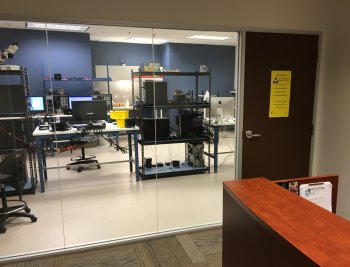Data loss can be expensive, frustrating, and heartbreaking — and while data recovery is almost always possible, our clients often ask for tips for improving their chances of a successful case result.
Our answer: Understand the signs of data loss and take immediate steps to limit the extent of the damage. Whether you need to recover data from a hard drive, solid-state drive (SSD), RAID array, or an email database, the safest course of action is to contact a professional data recovery provider as soon as possible.
Below, we’ll take a closer look at the data recovery process and provide steps to take following a media failure. As a quick reminder, Datarecovery.com provides free media evaluations, and all of our services feature a no data, no charge guarantee. To get started, schedule a free estimate.

The Most Important Factor in Data Recovery Success Rates
Over the past two decades, we’ve monitored the results of thousands of cases and analyzed the data to find factors that affect recoverability. Our engineers use this data when evaluating new cases. By comparing each data loss scenario to cases with similar profiles, we’re able to accurately report the likelihood of a full recovery in each failure analysis report.
Dozens of factors can influence success rates, but one factor is especially influential: The longer a device operates after data loss, the lower the chances of 100% successful data recovery. Here’s why:
- If a data storage device physically malfunction, operating the media in a failed state may cause additional damage. For example, hard drives may fail when the actuator heads malfunction. If the heads come into contact with the platters, data will be permanently removed from the hard drive. Read more about platter damage in this article.
- If data has sustained logical damage (for instance, if files are corrupted or if they were accidentally deleted by a user), operating the device may overwrite a portion of the files. Read about file corruption here.
- When computer users recognize the signs of data loss, they often install data recovery software or use disk monitoring programs to analyze the issue. This can be dangerous since both types of applications require intensive operation — by forcing the device to operate, the user unintentionally makes the situation worse.
It’s important to recognize that permanent data loss can affect any type of digital device. Datarecovery.com maintains industry-leading success rates for hard drives, RAID arrays, flash media, and a variety of other storage technologies. However, while the vast majority of cases are recoverable, severe damage can compromise data recovery attempts.
Steps to Take When Data Loss Occurs
If you cannot access important files for any reason — and you don’t have a backup — turn the device off immediately. Do not attempt to operate storage media that shows any signs of physical damage.
Take the following steps to improve your chances of successful data recovery:
- Record any symptoms associated with data loss. Hard drives may make unusual noises (such as clicking sounds), while RAID arrays may report error codes indicating controller issues or hardware failures. Collect as much information as possible.
- Find a qualified data recovery provider. In order to restore files from damaged media, engineers need specialized tools and access to a certified cleanroom. Without proper technology, data recovery attempts can cause media damage, so look for a provider with an established track record.
- Take precautions when handling media. Follow anti-static protocols when removing hard drives and solid-state drives from your computer’s chassis. When shipping media, use anti-static bags for devices with exposed printed circuit boards (PCBs).
Trust the world leader in data recovery services.
Datarecovery.com operates four full-service laboratories throughout the United States and Canada with certified cleanrooms. Our team is ready to help you recover your files safely and efficiently — and with free evaluations and our no data, no charge guarantee, we help you minimize risks while ensuring the best possible case result.
Get started today by scheduling a free quote.





